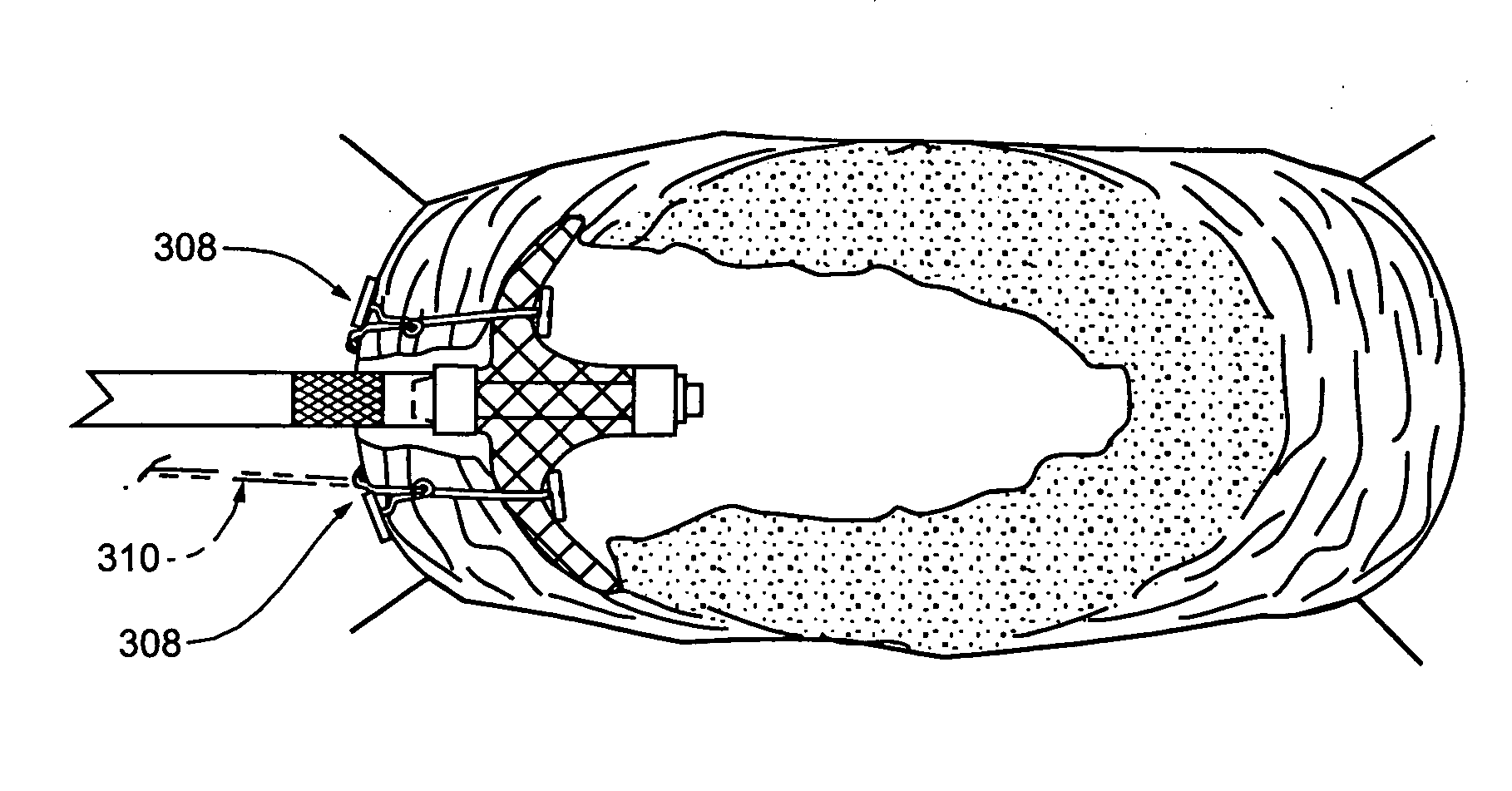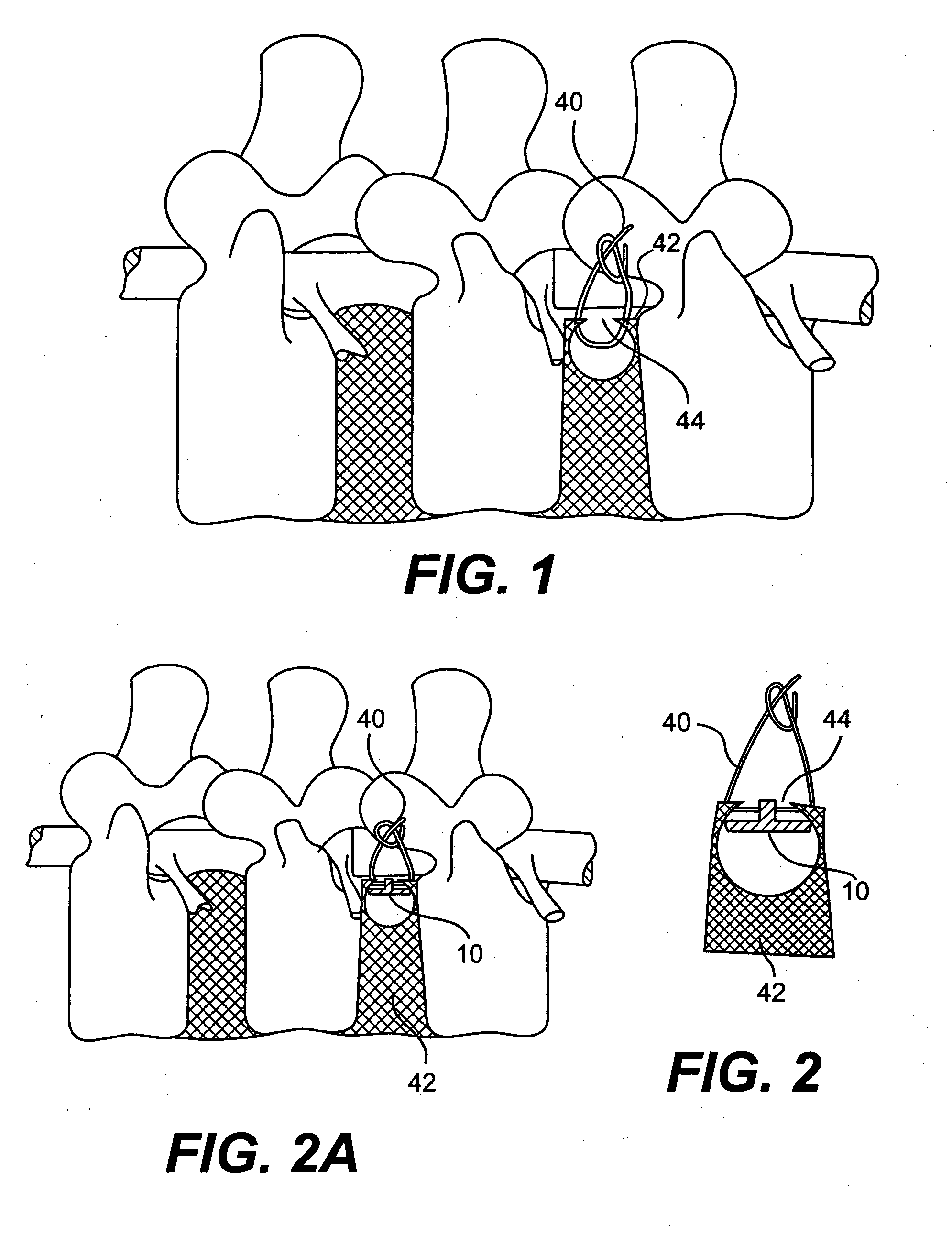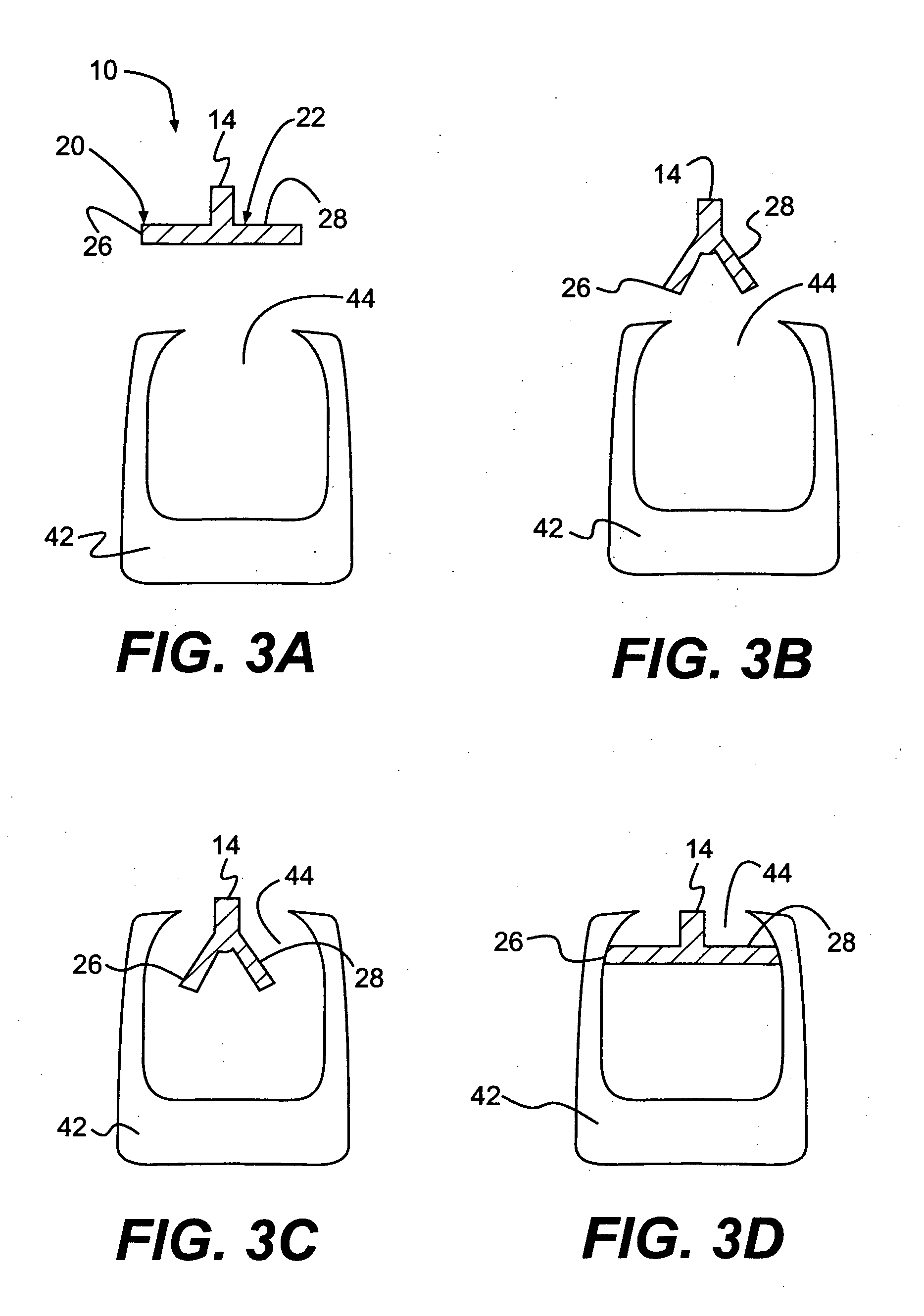Method and apparatus for enhanced delivery of treatment device to the intervertebral disc annulus
a treatment device and intervertebral disc technology, applied in the field of enhanced treatment device delivery to the intervertebral disc annulus, can solve the problems of premature development of degenerative and/or arthritic changes, abnormal joint mechanics, and increased viscosity, so as to promote annulus healing, reduce re-extrusion, and restore the natural integrity of the wall
- Summary
- Abstract
- Description
- Claims
- Application Information
AI Technical Summary
Benefits of technology
Problems solved by technology
Method used
Image
Examples
Embodiment Construction
[0097] Reference will now be made in detail to selected illustrative embodiments of the invention, with occasional reference to the accompanying drawings. Wherever possible, the same reference numbers will be used throughout the drawings to refer to the same or like parts.
[0098] As discussed in previous pending applications, it is understood that there can be a variety of device designs of patches / stents / implants / meshes / devices / treatment devices to repair damaged annular tissue and / or otherwise facilitate maintaining other intradiscal materials within the disc space. These devices can be constructed of single components or multiple components, with a variety of different materials, whether synthetic, naturally occurring, recombinated (genetically engineered) to achieve various objectives in the delivery, deployment and fixation of a device to repair or reconstruct the annulus. The following device concepts are further discussed for additional embodiments of a device and / or system f...
PUM
| Property | Measurement | Unit |
|---|---|---|
| tension | aaaaa | aaaaa |
| biocompatible | aaaaa | aaaaa |
| biodegradable/bioresorbable | aaaaa | aaaaa |
Abstract
Description
Claims
Application Information
 Login to View More
Login to View More - R&D
- Intellectual Property
- Life Sciences
- Materials
- Tech Scout
- Unparalleled Data Quality
- Higher Quality Content
- 60% Fewer Hallucinations
Browse by: Latest US Patents, China's latest patents, Technical Efficacy Thesaurus, Application Domain, Technology Topic, Popular Technical Reports.
© 2025 PatSnap. All rights reserved.Legal|Privacy policy|Modern Slavery Act Transparency Statement|Sitemap|About US| Contact US: help@patsnap.com



